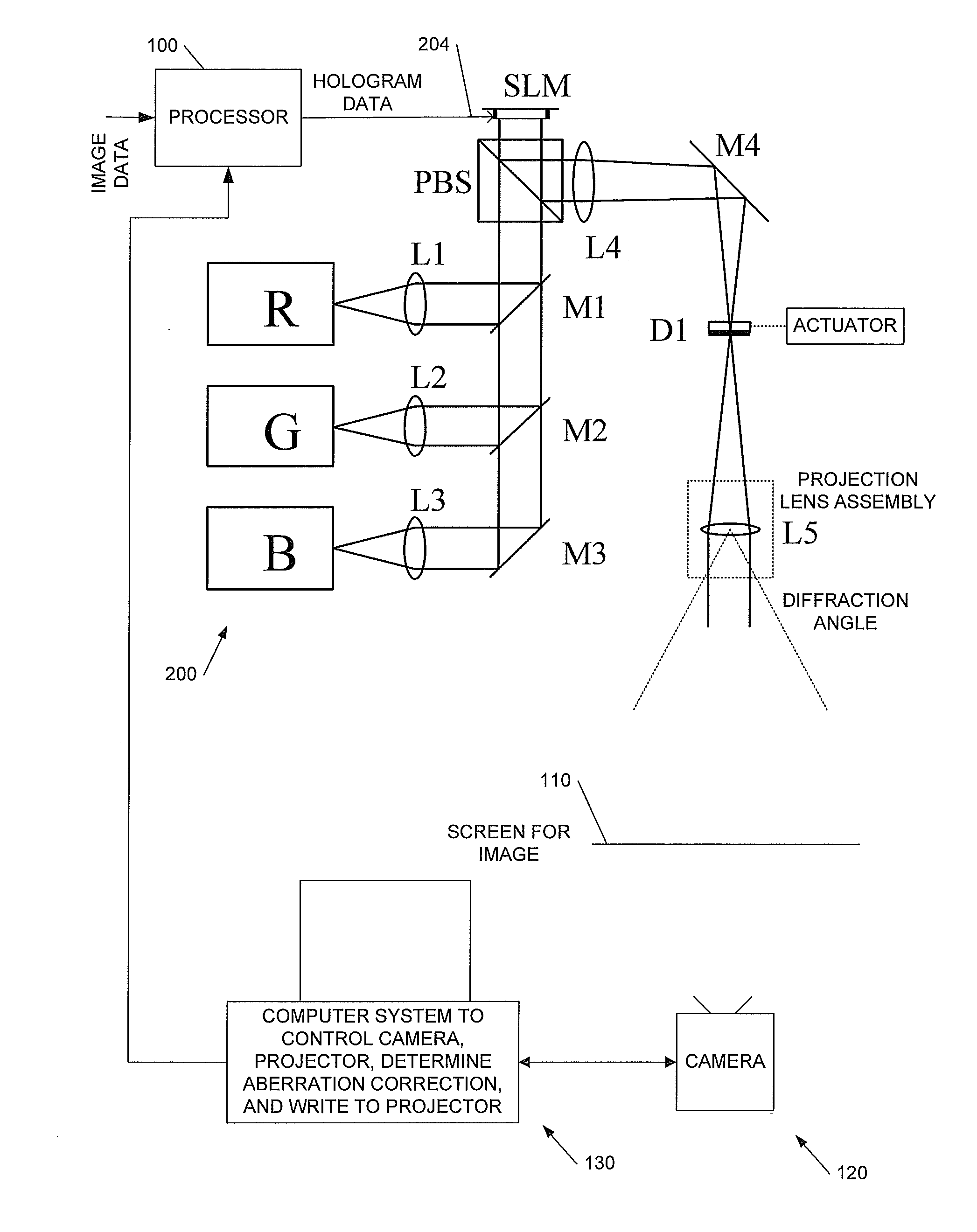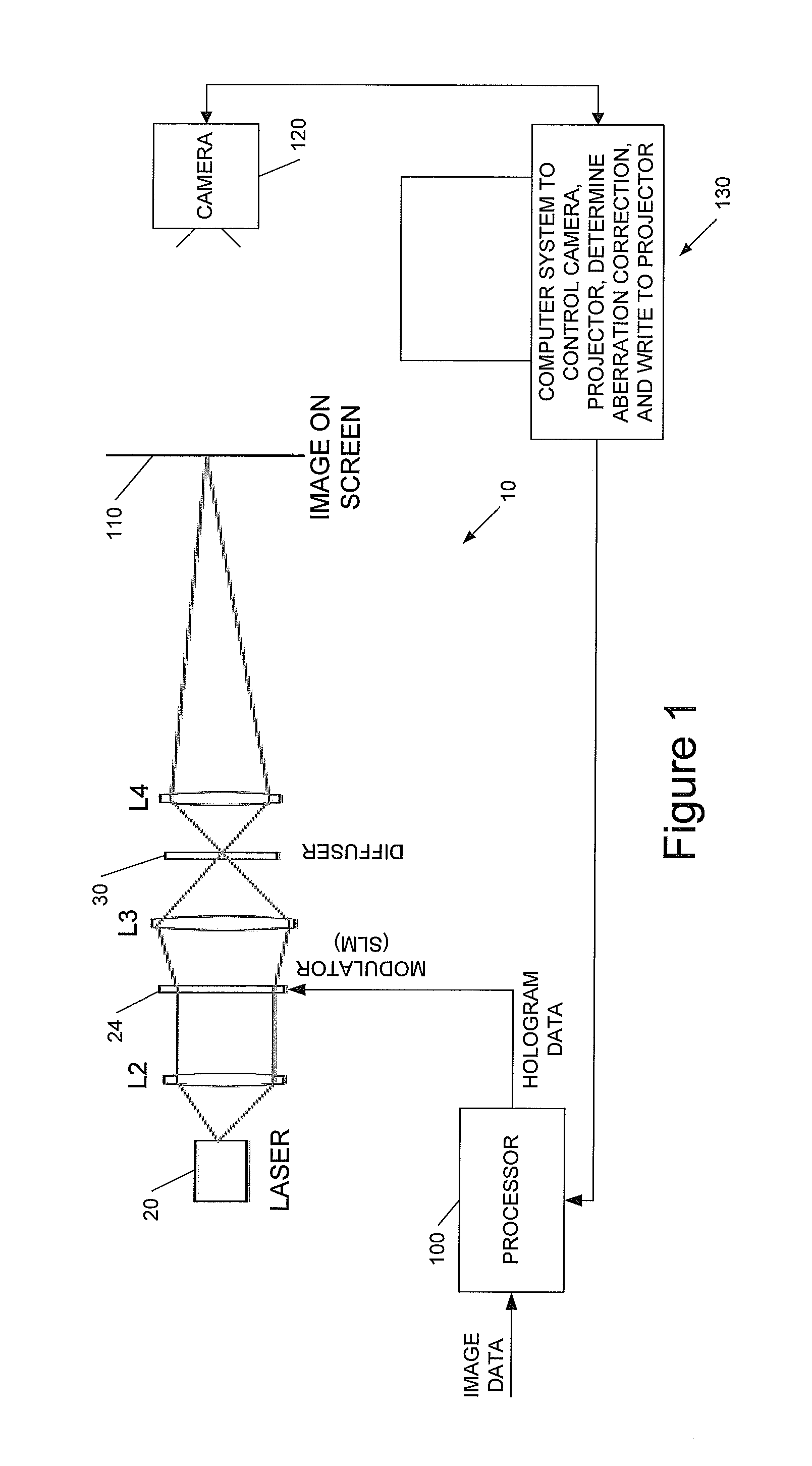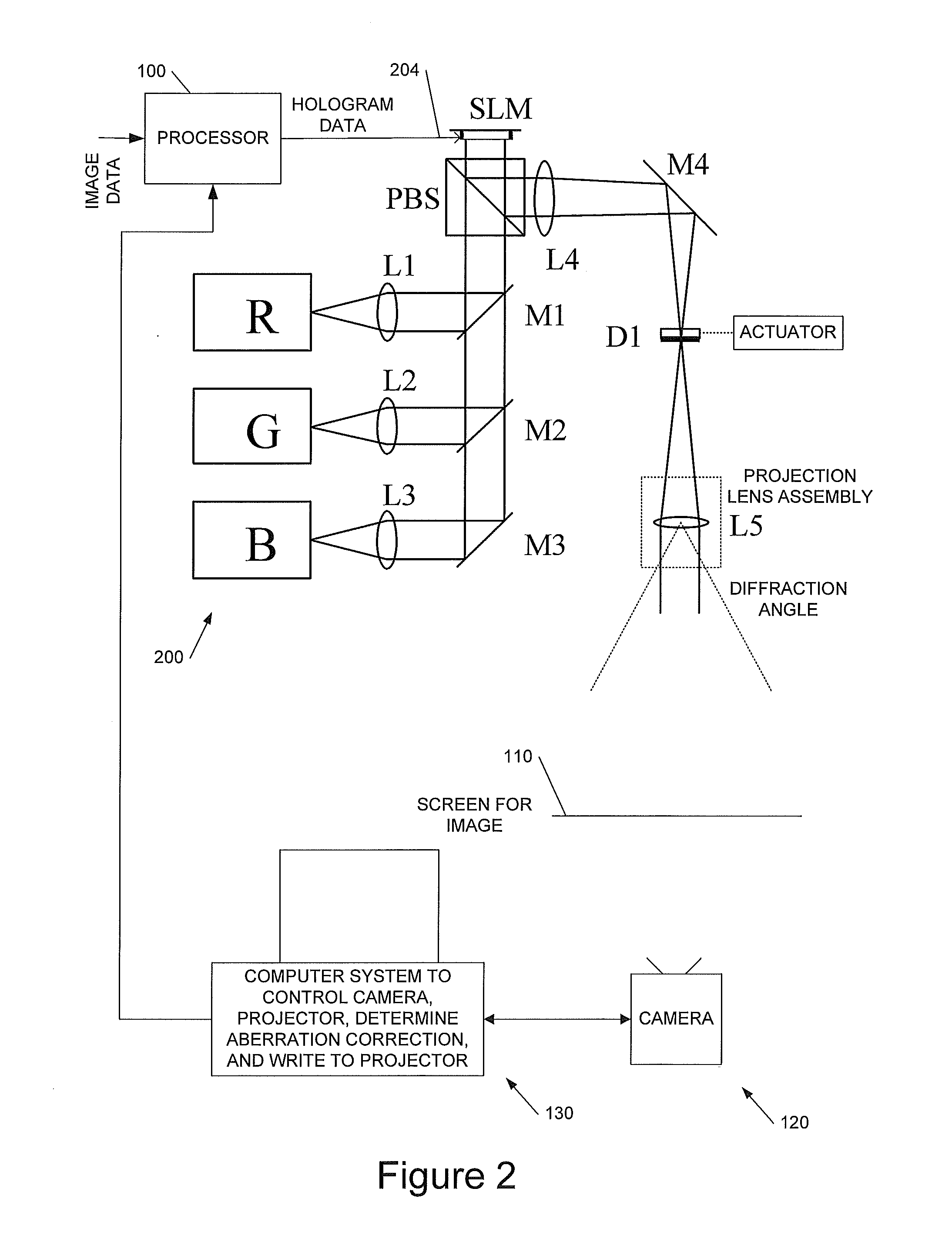Holographic Image Display Systems
a technology of image display and display spot, which is applied in the field of holographic image display system, can solve the problem of not giving an accurate measurement of a wavefront in an unmodified system, and achieve the effects of flattening out phase distortion, and improving the signal-to-noise ratio
- Summary
- Abstract
- Description
- Claims
- Application Information
AI Technical Summary
Benefits of technology
Problems solved by technology
Method used
Image
Examples
Embodiment Construction
[0040]This invention relates to methods, apparatus and computer program code for aberration measurement and correction in holographic image projection systems, and to aberration-corrected holographic image projection systems.
[0041]We will describe a way of using the phase-modulating element in a diffractive, holographic projector to measure the aberrations present in the projector in such a way as to make it easy to correct for them. The approach measures the wavefront directly, but without requiring the introduction of any optical elements not already present in the system—the measurement can be carried out with an unmodified projector. In broad terms the technique identifies what happens to light incident on small patches of the SLM, and exploits the fact that average phase gradient there corresponds to a position offset in the resulting image.
[0042]To aid understanding of the invention we first describe some preferred implementations of holographic image display systems with whic...
PUM
 Login to View More
Login to View More Abstract
Description
Claims
Application Information
 Login to View More
Login to View More - R&D
- Intellectual Property
- Life Sciences
- Materials
- Tech Scout
- Unparalleled Data Quality
- Higher Quality Content
- 60% Fewer Hallucinations
Browse by: Latest US Patents, China's latest patents, Technical Efficacy Thesaurus, Application Domain, Technology Topic, Popular Technical Reports.
© 2025 PatSnap. All rights reserved.Legal|Privacy policy|Modern Slavery Act Transparency Statement|Sitemap|About US| Contact US: help@patsnap.com



